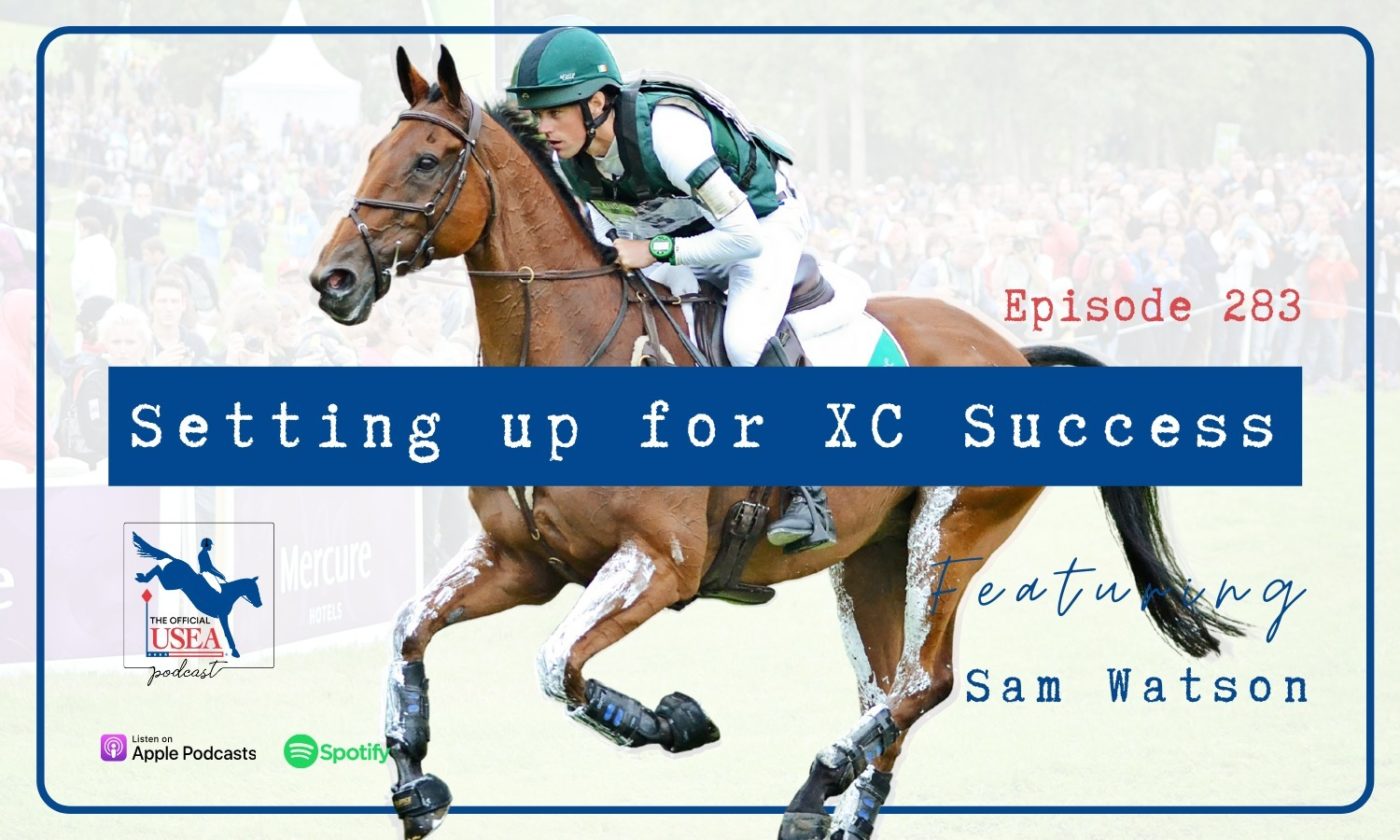Nicole Brown is joined this week by Irish World Equestrian Games silver medalist Sam Watson as they discuss the road to a successful cross-country round. They cover your basic training at home before your event, what you do when you get to the event and are walking the course, warming-up, visualization, and finally how to tackle the course. This podcast is full of words of wisdom from Sam that will keep you listening to the very end so tune in now!
- Nicole asks: What should the picture of a successful cross-country be? Sam said that it should look like you have time and actually quite relaxed. “I think a lot of people think about cross-country being this high adrenaline, high octane sport, and we do sometimes have to get scrappy, but you don’t want every fence looking like that. It is actually okay to feel like you have time – smooth is good.”
- The process for success starts at home and Sam says the second most important part of cross-country is control, and you can do so much at home with that. “Don’t be afraid to simplify,” Sam said. The first most important part of cross-country is footwork which is most effective to train on natural terrain, but it can start at home. “Footwork is what gets us out of trouble – the control and the precision is what helps us from getting into trouble.”
- On a cross-country school “you need to balance the testing of yourself with the comfort zone and the confidence side of it,” said Sam. “It is best to raise the bar when you have that expert help. Do not be afraid to start small and start simple. . . Success is simplicity done really well. . . go and start over the small things and don’t over-manage the situation. Let your horse find their balance and work things out and then just build up. Finish off easy as well so that you keep their confidence fuel tank full.”
- When you have arrived at an event Sam says the number one tip for course walking is that when you walk up to a fence you should ask yourself, “What is the course designer thinking?” Another tip is that the first time you walk the course is to be aware of the first time you see the fence is similar to how the horse will see the fence and you may need to give your horse time to “put his glasses on and just have a look.” Of course, don’t forget to count your fences so you don’t miss a fence and always know your options so you have a plan B!
- Before Sam heads down to the warm-up he likes a little visualization – both how to do it right and what might go wrong and how to solve that problem.
- “Warming up is a process – you have to consider what you are warming up for, but you are basically preparing your horse for what lies ahead. . . Having that set routine helps me to not get nervous.”
- If something goes wrong in the warm-up what do you need to do? According to Sam: “Avoid the word need in your mind, don’t say ‘I need more time.’ Because then if you don’t have more time then you are going to think you can’t do this and that’s not the case. If I fall off and I can get back on and I can get cleared and the starter says ‘3, 2, 1, go’ and I am still 10 seconds from the start box, the only option that I have available is I either start or I don’t start – and I am starting. I have prepared for this event. I can go down to that first fence and I know it won’t be the most difficult fence on the course and I can take a deep breath and just say ‘it’s just a fence and I am going to jump this fence as well as I possibly can. Now I have another fence and I am just going to do that again. Just take it one fence at a time and just focus on that.”
- When you are approaching the fence you are going to be focusing on what you need to do, but where I think a lot of people struggle is actually the time in between fences where they are doubting themselves. That is why I love to ride a tight line or looking for the best ground it gives me something to focus on. Or I like to train my horse, soften, give him a little pat. Thinking about those things that are useful.
- If you struggle with nerves – take it away from yourself and think about your horse as that is a much more useful place to be.
Subscribe to the USEA Official Podcast on Apple Podcasts, Spotify, PodBean, or Stitcher, or click below to listen in!
